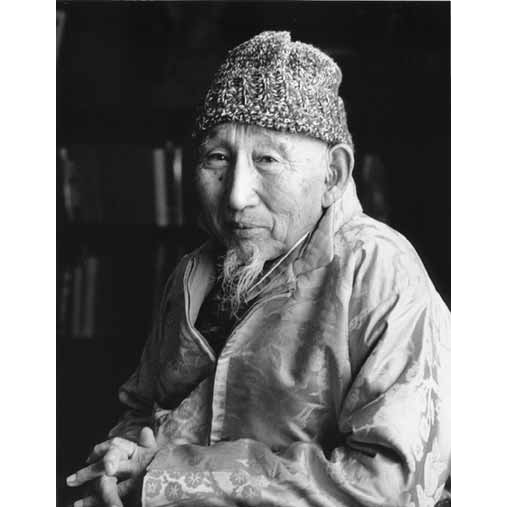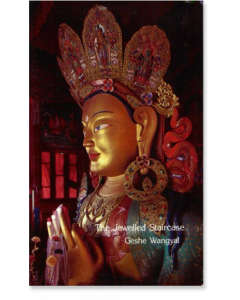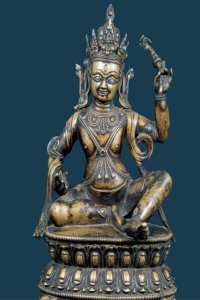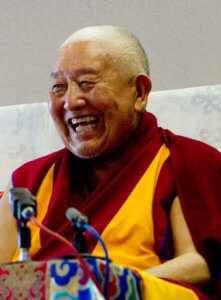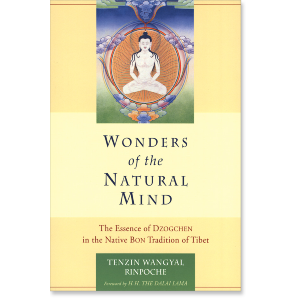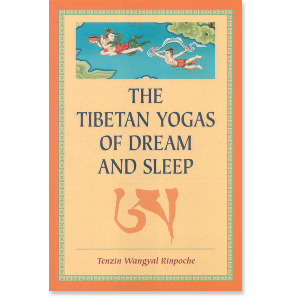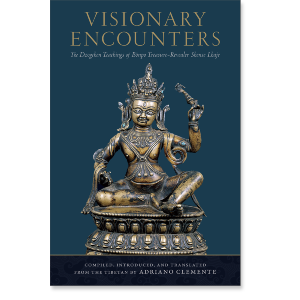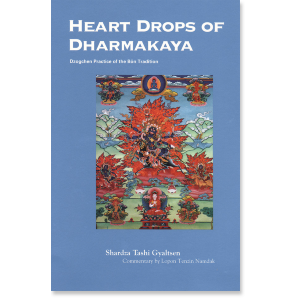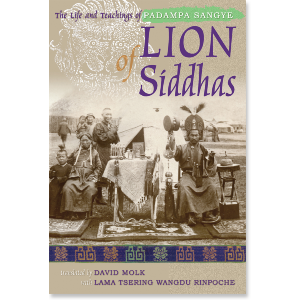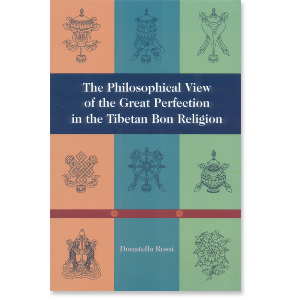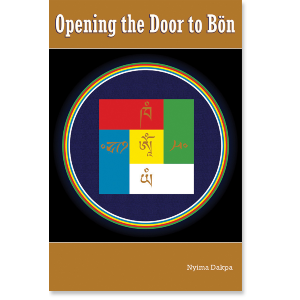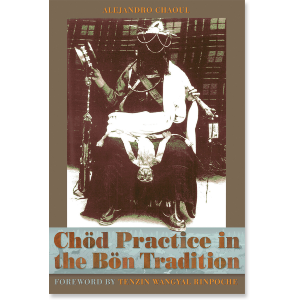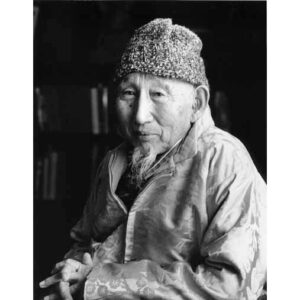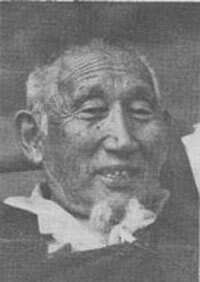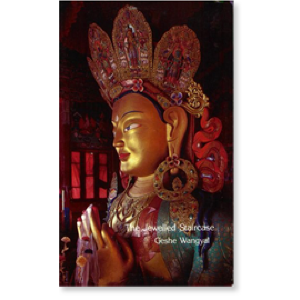| The following article is from the Spring, 1996 issue of the Snow Lion Newsletter and is for historical reference only. You can see this in context of the original newsletter here. |
Lopon Tenzin Namdak Rinpoche
A Remarkable Bonpo Master
The Beginnings of a Bönpo Master
Lopon TenzinNamdak Rinpoche is one of the living fathers of the indigenous Tibetan spiritual tradition known as Bön, from which Tibetan Buddhism derives its unique character.
Born in 1926 into a family of famous artists, he entered a monastery at seven. From 1945 to 1950, Lopon was in retreat with his master, who advised him to go to the renowned Bonpo monastery, Menri, established in 1405. Lopon earned his Geshe degree at Menri, where from 1953 until 1957 he was a Lopon, or teaching master.
Soon thereafter, he was forced into retreat because of the Chinese invasion. In 1960, Lopon Rinpoche tried to leave his homeland to find safety and refuge in India, but he didn't make it. Chinese soldiers shot him.
While in severe pain from his wounds, Lopon despaired that he would die. In a dream, Sidpa Gyalmo, the all powerful main Protector of the Bon Dzogchen teachings, came to him. She explained that he would survive and continue to serve the teachings; she urged him not to lose faith. With constant inspiration drawn from his dream, Lopon steadied himself and, after ten months of hardship, he made a miraculous escape to Nepal.
How to Gain Recognition and Education in the West?
At the invitation of the eminent Tibetologist David Snellgrove, Lopon went to England in 1961, where he became a visiting scholar at the University of London, and, later, a Rockefeller scholar at Cambridge University. Lopon's work with Professor Snellgrove resulted in the first scholarly study of the Bonpo spiritual tradition published in the West: The Nine Ways of Bon.
The Bon people are no strangers to persecution and religious prejudice. Long before the Chinese sought to eradicate Bon culture and spirituality, Tibetan politicians sought to do the same. There was a harsh repression of Bon during the eighth, ninth and tenth centuries.
Religious bias, which continues today, interferes with Lopon's efforts to secure the proper recognition of Bon culture and its rich spiritual tradition. Some misguided scholars have tried to trivialize Bonpo spirituality by claiming that it is a mere copy of Buddhism. Such a claim is implausible, since Tibet's form of Buddhism is distinctly indigenous, which is to say Bon. Moreover Guru Padmasambhava's father, Dranpa Namkha, was a Bon master, who sought to preserve Bon during the time of its repression, and Vairochana, one of Padmasambhava's foremost disciples and a renowned scholar, participated in the translation of sacred Bon scriptures.
Is the Bön Religion an Authentic Spiritual Tradition?
Fortunately, very accomplished Dzogchen masters, such as Namkhai Norbu Rinpoche, who is beyond being conditioned by the politics of this or that teaching, have acknowledged the independence and authenticity of the ancient Bon spiritual tradition.
It did not derive from India or from the Buddha Shakyamuni. The Bon Dzogchen lineage was sourced many thousands of years ago from the Buddha Tonpa Shenrab in a land then known as Tagzig, which modern scholars have identified as Tazikhistan or Persia. From Tagzig, the teachings went to Zhang Zhung and from there on to Tibet.
Surviving Persecution
When the Red Guards destroyed Menri Monastery, they killed many Bonpos. Those who lived fled to Northern India, where they worked as road laborers to survive. Because they were weak and impoverished, many of them became ill and died.
Lopon has been working desperately to keep the Bon people and their culture alive. In 1967, with the help of the Catholic Relief Service, he personally established settlements in undeveloped forest land at Dolanji, India. Seventy Bonpo families found refuge there. Lopon then worked to found a new Menri Monastery nearby to keep the sacred flame of Bonpo Dzogchen alive.
Keeping the Bön Tradition Alive
In the late 1970's, a sufficient number of Bon texts were available for Lopon to organize classes so that he could assume principal responsibility for educating younger generations of Bonpos.
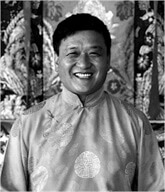
Tenzin Wangyal was recognized as the reincarnation of the great Bon master, Khyungtul Rinpoche, and Lopon had prophetic dreams which revealed that the boy Tenzin would grow to bring the Bon Dzogchen teachings to the West. These dreams were accurate. Tenzin Rinpoche now teaches in America, Mexico and Europe through his Charlottesville Virginia foundation, Ligmincha Institute.
Remembering Lopon
Tenzin Rinpoche told me some touching stories about his life with Lopon. As a young boy, Tenzin often visited his mother who lived nearby Menri Monastery. The path to and fro was not very long, but there was a half-way point where Tenzin felt anxious, because he was out of sight of both his mother's home and of Menri. Knowing this, Lopon always waited for him and called out, loudly and lovingly, to offer Tenzin his voice for comfort and direction.
Lopon is a man of great patience and kindness. When he was a boy on extended retreat with his master, he often went hungry while his master ate very well. Apparently, his master felt that hunger should be one of Lopon's experiences. Lopon persevered through the hunger. What it taught him was to never cause his own students unnecessary pain by withholding from them. Lopon has been giving freely from his Heart ever since.
Ligmincha Institute's Annual Retreat
Summer of 1995, at Ligmincha Institute's third annual retreat, Lopon gave the Bon Dzogchen teaching of the 21 Nails, with Tenzin Wangyal translating. The 21 Nails are a complete path to achieving profound realization as the final goal of spiritual practice, either during this life, at the time of death or while in the intermediate state. Lopon emphasized that, beyond the 21 Nails teaching, nothing exists. It represents the fourth and most secret part of the Zhang Zhung Nyan Gyu, a sacred text that comes from an unbroken, and so, very reliable, oral transmission.
This entire teaching had never before been given in the West. Lopon was eloquent; the teaching was alive, clear and electrifying. The strength and equanimity of his presence were Dzogchen itself.
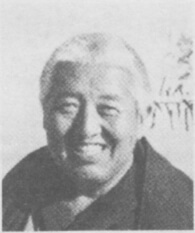
Lopon Tenzin Namdak Rinpoche
Supporting Tibetan and Nepalese refugees
In the face of poor health, scarce food and little comfort, Lopon Rinpoche has worked long and hard for many people. He labors today to provide relief for Tibetan and Nepalese refugees. Lopon is trying to firmly establish the Triten Norbutse Education Center in Kathmandu for families and children in need.
This project is a very important one because many of the adults and most of the children that Lopon is trying to help are suffering from malnutrition. Some have had infectious diseases that have left their immune systems badly compromised. The children especially need good food and reasonable shelter to regain their health.
Please join in helping Lopon and the Bonpos to become self-sufficient by making a one time or regular donation to the Center.
Send donations to: Ligmincha Institute's Donations page

